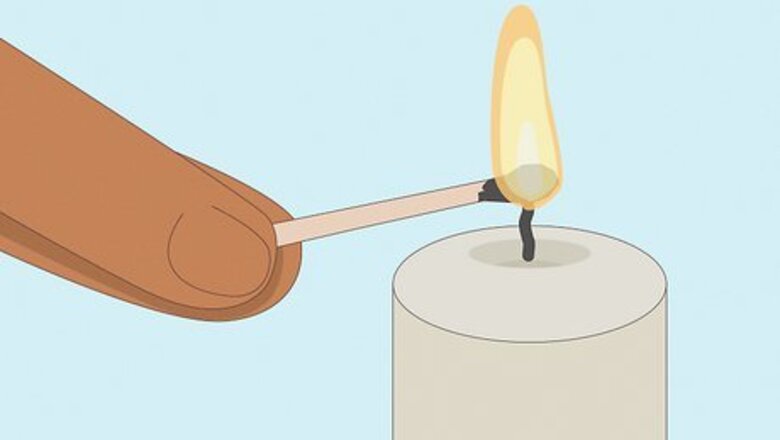
views
- If you have them, use matches or a gas stovetop to light your candle wick. These are the easiest, safest options.
- Alternatively, turn on an electric stovetop or other appliance until it’s red hot, then touch the wick to the heat to ignite it.
- Try striking a ferro rod or a piece of flint over a fireproof bowl of paper to start a flame, then use that to light the candle wick.
Matches

Light a match and use the flame to start the candle wick. If you’ve got a matchbook on hand, grab it and swipe the head of one of the matches against the rough strip on the outside of the book (if you have longer kitchen matches, those are even better). Once the head lights, touch it to the wick to start your candle. Consider keeping several matchbooks in your kitchen (away from where children can reach) as a backup for when your lighter goes missing.
Gas Stove

Turn on a burner on a gas stove and use the flame to light your candle. If you don’t have matches on hand, this is the next best thing. Simply touch the exposed wick of a taper candle to the stovetop flame, then use that candle to light any others (this is safer than bringing each candle to the stove). If the wick is sunk inside a glass jar, light the end of a cotton swab or a dry piece of spaghetti on the flame as a makeshift match. Then, use it to light the candle wick.
Kitchen Appliances
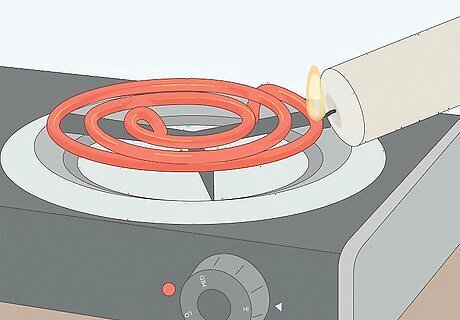
Turn on an electric stove or toaster, then touch the wick to the heat. If you don’t have a gas stove, no sweat! Just turn your electric stove on high (or any other appliance that gets hot, like a toaster, toaster oven, or a space heater) and touch the exposed wick of a taper candle to the heat. Once the wick lights, use it to start any other candles you want to burn. Once your candle is going, make sure to turn off the appliance. Wear oven mitts or heavy-duty gloves to avoid accidentally burning yourself on the hot appliance. Try lighting a cotton swab or piece of dry spaghetti to light wicks that are sunk deep inside of a glass jar or container.
Magnifying Glass
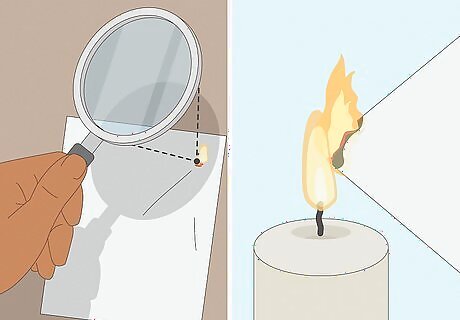
Focus sunlight through the lens onto some paper to create a flame. If it’s a bright day, hold your magnifier between the sun and a crumpled up piece of dry paper (preferably tissue paper). Adjust the magnifying glass until you see a bright, well-focused point of light on the paper. After just a few seconds, the paper should catch fire. Hold the candle wick to the flaming paper, or pick up the paper (if there’s a safe spot to grab it by) and touch it to the wick to light the candle. Use the lit candle to start others instead of bringing them all to the flaming paper. Extinguish the paper once the first candle is lit. If you don’t have a magnifying glass, try a pair of binoculars or a broken, transparent lightbulb full of water. Many hikers, campers, and survivalists carry magnifying glasses with them to start fires on bright, sunny days.
Striker
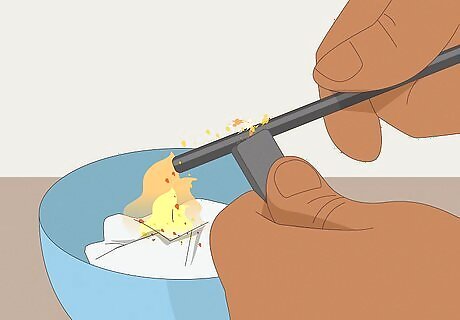
Use flint and steel, a ferro rod, or any sparking striker to start a flame. Place some crumpled paper in a cup or bowl made from fireproof materials like glass, ceramic, or stainless steel. Then, grab your striker and rub the pieces together to make a shower of sparks. Aim your sparks into the cup to light the paper, then use the flame to start your candle wick. Make sure to extinguish the paper fire once your candle is going. Alternatively, tear a cotton ball apart and place the fluff around the candle wick. Then, aim your sparks directly onto the candle. The cotton will catch fire, then spread to the wick. If you have a piece of flint, strike it against any steel object like an ax head or tent stake. Tools like a ferro rod often come with a striker.
Battery & Foil
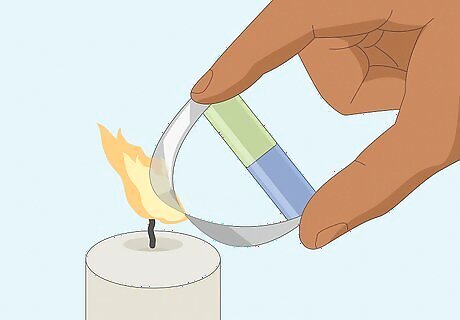
Connect tin foil to a battery’s terminals to make a hot, electrical circuit. The foil will rapidly heat up and ignite the wick in seconds, so wear protective gloves to prevent burns or electric shock. First, grab a battery—a AAA, AA, C, or D battery will work. Then, cut a strip of tin foil about 0.75 in (19 mm) wide and about twice as long as the battery. Pinch or cut the middle of the strip so there’s a connector no more than 0.25 in (6.4 mm) wide. Then, pull a cotton ball apart and place the fluff around the candle wick. Lastly, hold the ends of the foil strip to the terminals of the battery with the narrow connector in the middle of the strip touching the cotton, then watch as the cotton ignites! The flame will spread to the wick in seconds to light your candle. As we mentioned, this method can be extremely dangerous. We'd only suggest this option as a last resort, and if you do try it out, be very careful.




















Comments
0 comment